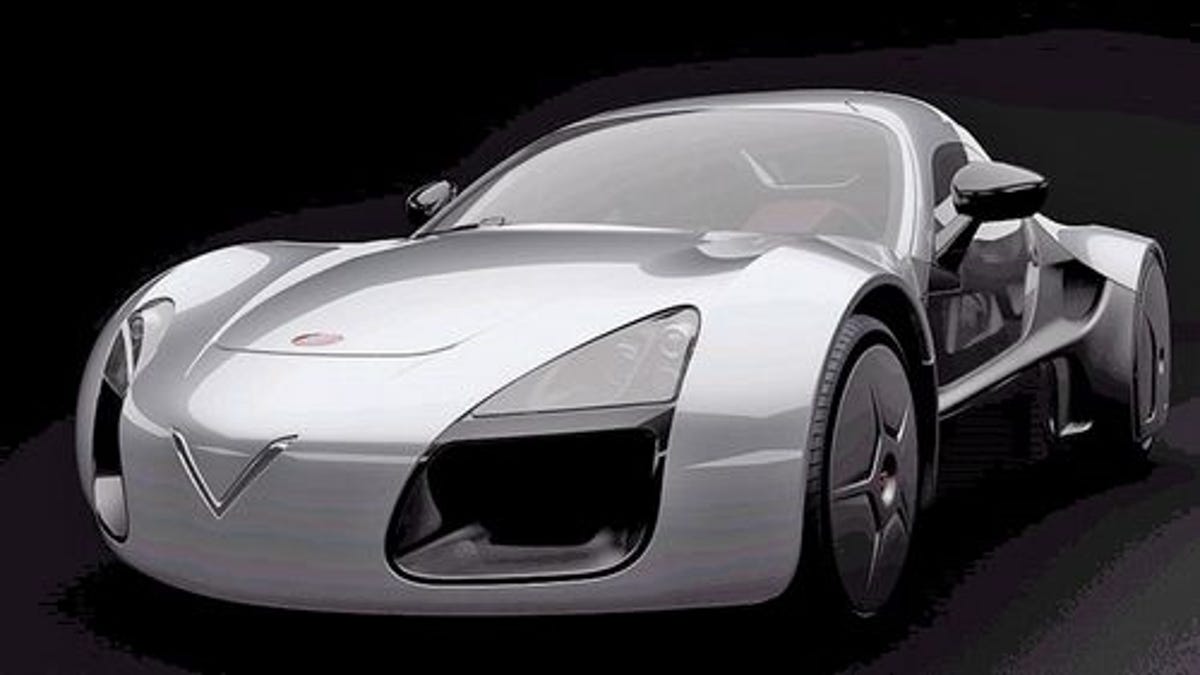In-wheel motors could reshape cars
Automotive News reports on how the use of in-wheel motors could affect future car design.

The white Vauxhall Vivaro van, its diesel engine rumbling, groans to a stop at a suburban Detroit stoplight.
Tom Prucha, Protean Electric's engineering executive, is behind the wheel. Protean makes in-wheel electric motors and the Vivaro he's driving has motors in both rear wheels.
At the stoplight, Prucha presses a button on the instrument panel. The diesel engine goes silent. When the light turns green, the Vivaro, now powered solely by the in-wheel electric motors, accelerates quickly and smoothly, more like a sports car than a commercial van.
Although in-wheel motors aren't revolutionary--Ferdinand Porsche unveiled a vehicle with them at the 1900 World's Fair in Paris--they have the potential to change how vehicles are powered and designed. As automakers pursue electric drivetrains to improve fuel economy and cut emissions, two avenues are likely using in-wheel motors:
1. Using them as a vehicle's sole power source, which could lead to radical redesigns of interior vehicle space.
2. Using them in tandem with an internal combustion engine, either to boost mpg or increase available power for performance vehicles.
Changing vehicle design
Several automakers have used in-wheel motors in prototypes--most notably the Porsche 918 Spyder, in which the motors deliver an additional 218 hp to the supercar's 3.4-liter 500-hp engine.
But the in-wheel motor's largest impact could be on design, says Mark West, chairman of the Transportation Design Department at the College for Creative Studies in Detroit.
"If you take the motor out of the traditional location in the vehicle architecture and put it out in the wheels, you get that space that the engine used to occupy," West said. "So it opens up opportunities to rearrange the package of the vehicle."
West said that the extra space could be used for storage or seating.
Still, several challenges remain, including the weight and cost of the motors, before in-wheel motors gain widespread use, says Brett Smith, co-director of the manufacturing, engineering and technology group at the Center for Automotive Research in Ann Arbor, Mich.
Wheel motors add to a vehicle's unsprung weight--the weight that isn't supported by the vehicle's frame. That requires changes to the suspension and damping systems.
"The good news is you control each wheel. The bad news is each corner module gets a lot heavier and that creates vehicle dynamics challenges," Smith said. "They're all potentially overcomeable, but they definitely need different dynamics."
While he couldn't comment on specific dollar amounts, Smith said the cost of in-wheel motors has become "more interesting" in recent years.
Early efforts
In addition to the Vivaro--which can be powered solely by its engine, its electric motors, or as a diesel-electric hybrid--Protean has produced several other prototypes, including an electric Ford F-150 pickup, with four in-wheel motors, and a Volvo Recharge plug-in hybrid concept that features a top speed of over 120 mph.
While the company's in-wheel motors have yet to hit the market commercially, Protean's short-term focus will be on retrofitting fleet and commercial vehicles with in-wheel motors to improve fuel economy and performance, CEO Bob Purcell said.
"We can apply [the technology] to two-wheel drive or all-wheel drive," said Purcell, who led General Motors' Advanced Technology Vehicles Group from 1994 to 2002. "We can make a pure electric, a hybrid, or a plug-in hybrid. Just think of it as available horsepower and torque that's electrically powered."
In 2008, French tire maker Michelin SA unveiled its Active Wheel motor in two cars, the Venturi Volage electric sports car and the Heuliez Will five-door hatchback, at the Paris auto show.
Each Michelin motor can produce 30 hp while controlling all aspects of suspension and braking. While the motor is still in development, Michelin North America spokeswoman Lynn Mann wrote in an e-mail that the Active Wheel could be part of the "tire of tomorrow."
"Active Wheel allows us to increase a vehicle's operating efficiency to allow a car's road, safety, energy, and environmental performance to achieve unprecedented levels," Mann wrote. "This is because of the miniature traction engine and an electrical suspension system incorporated into the wheel, thus freeing up space and weight."
(Source: Automotive News)